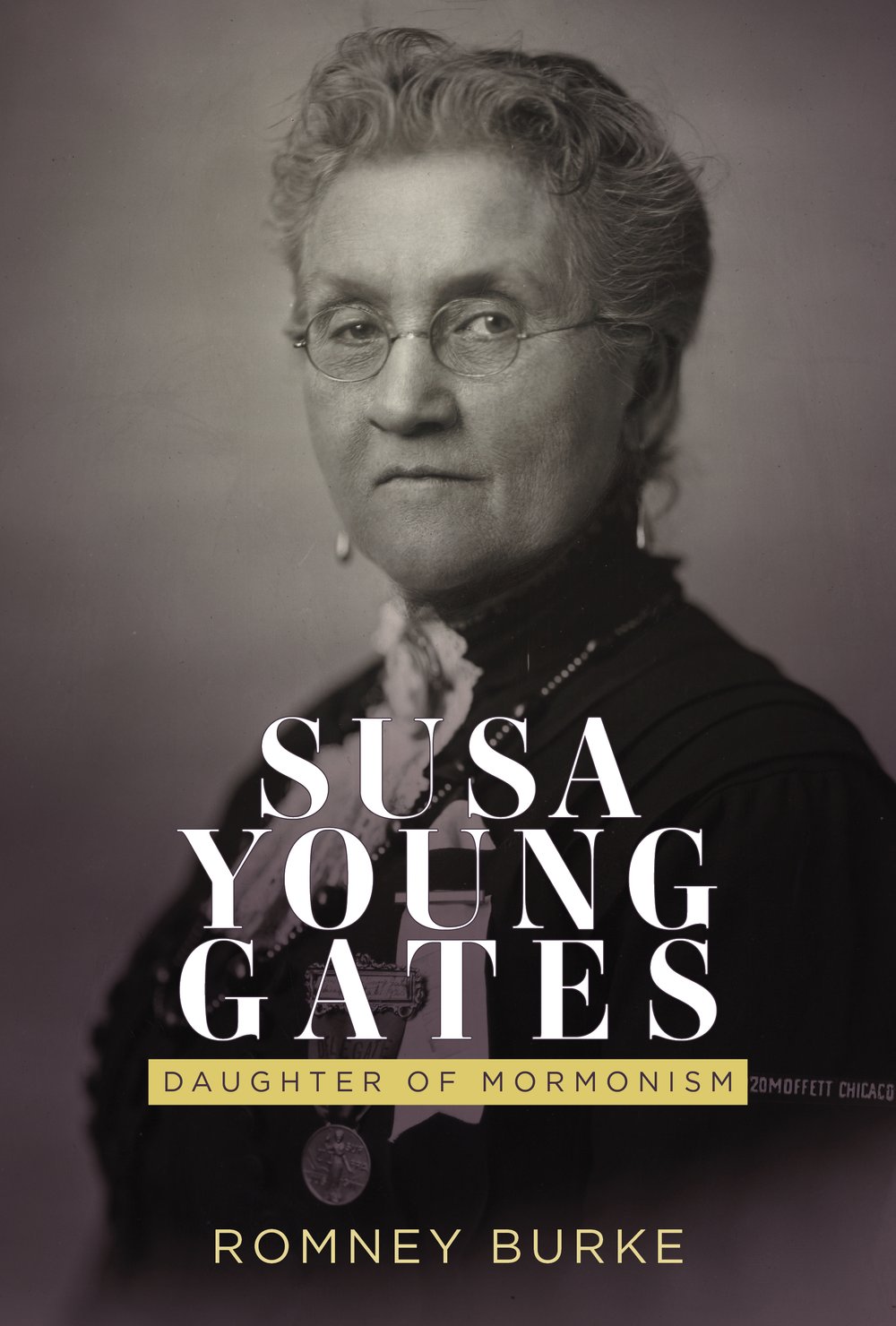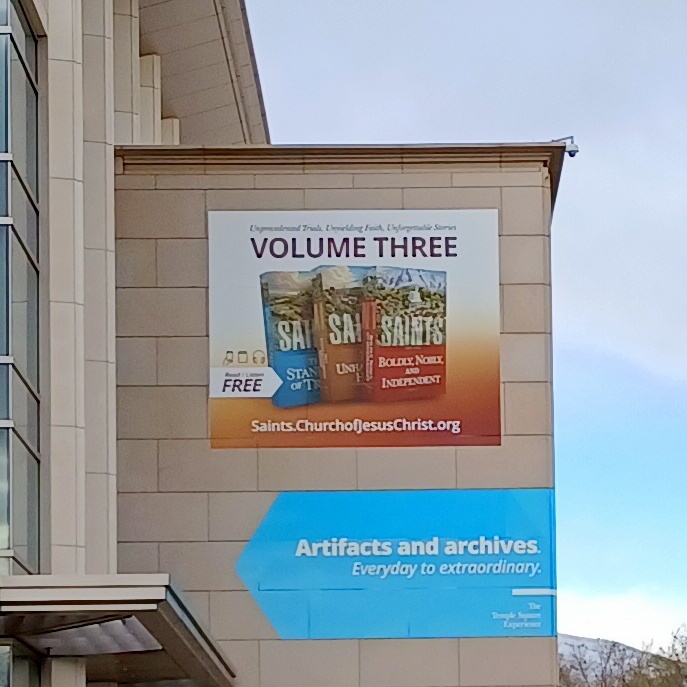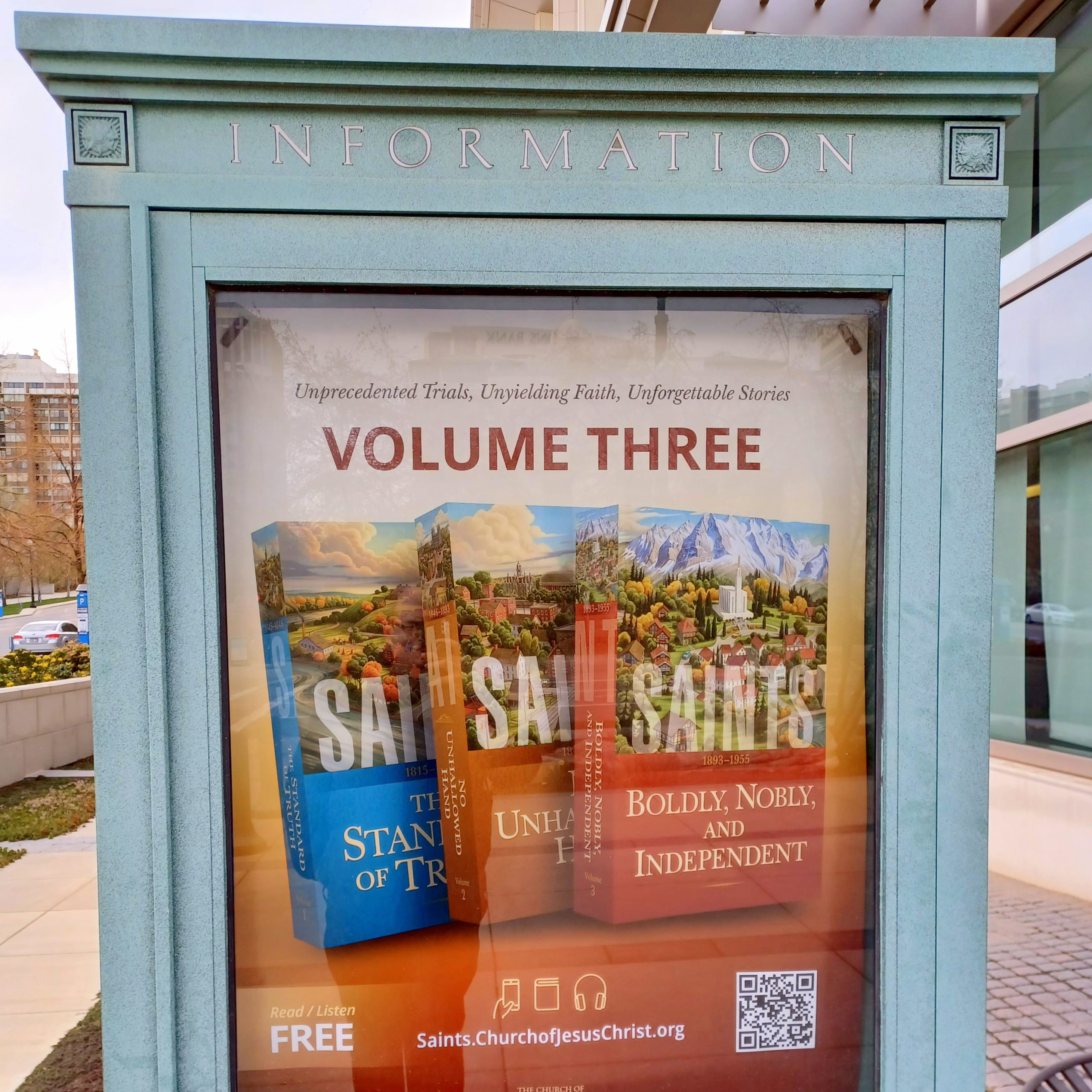Author: Chad Nielsen
-
Three Degrees
Language is a tricky thing. Sometimes, when someone says a word, it can mean something very different to them than it does to us. This can be particularly true when that person is from the past and the exact meaning of a word changes over time. In a recent interview with Bryan Buchanan about an…
-
Method Infinite: On Masonry and Mormonism
The recently-published Method Infinite: Freemasonry and the Mormon Restoration by Cheryl L. Bruno, Joe Steve Swick III, and Nicholas S. Literski (Greg Kofford Books, 2022) is an insightful and information-packed volume about a plethora of possible points of contact between Freemasonry and the Restoration of the Church of Christ. While many studies of Masonry and…
-

Daughter of Mormonism
Susa Young Gates was an interesting and important personality, and Romney Burke’s recently-published biography Susa Young Gates: Daughter of Mormonism (SLC: Signature Books, 2022) provides a well-researched glimpse into her life. Perhaps the best-known daughter of President Brigham Young, Susa led a life as a prominent figure in the Church of Jesus Christ of Latter-day Saints. …
-

Was Jesus Married or Not?
An enigma that has been explored repeatedly over the years, both in the Church of Jesus Christ of Latter-day Saints and in Christianity more broadly, is the marital status of Jesus of Nazareth. There is little to reliably indicate either way in the established canon of the New Testament, but that hadn’t stopped people from…
-

Masonry and Mormonism
The relationship between Freemasonry and the Church of Jesus Christ of Latter-day Saints is a subject of controversy for members of the Church. In the near future, two important studies of that relationship are slated to be published – Method Infinite: Freemasonry and the Mormon Restoration by Cheryl L. Bruno, Joe Steve Swick III, and…
-

The Poisoning of Deseret
One biographer of the famed British composer and ethnomusicologist Ralph Vaughan Williams posted a question – how could Vaughan Williams be both a socialist and a nationalist at the same time? One tended towards trying to eliminate boundaries and differences while the other tended toward glorying in boundaries and difference. He answered through two different…
-
Consecration and Tithing
What do you think of when you hear about the law of consecration? For me, the initial images that flash through my mind have to do with past attempts in the Church to implement programs like the United Order of Enoch in various communities in the Midwest and Utah during the 1800s. Yet, I also…
-
The Pony Express Before the Pony Express
Growing up in Utah, I remember a time when my parents took me out to a remote location where there was a reenactment of the Pony Express, a famous mail system in the western United States of America that facilitated fast communication. As noted in a recent interview at the Latter-day Saint history blog From…
-
Relief Society Records
Documents feel like treasures to me. They give insight into the past and have to be mined to get everything you can out of them. Because of that, it’s really exciting that the Church has begun to release minutes from the Relief Society General Board. In a recent interview at the Latter-day Saint history blog…
-
Grace, Works, and Becoming
Since at least the time of Augustine of Hippo and Pelagius, western Christianity has been embroiled in a debate about salvation and grace. The two extremes have been represented as salvation by grace alone and earning salvation by our own works. In a recent interview at From the Desk, Terryl Givens described the need to…
-
Accuracy of the Journal of Discourses
One of my ongoing dreams is to be able to afford a full set of the Journal of Discourses as part of my collection of Latter-day Saint books (though given the price tag, it probably won’t happen any time soon). In any case, the Journal of Discourses holds an interesting place in the Church of…
-
The Smith Family and the First Vision
One of the more interesting points of contention about the history of the First Vision is how much Joseph Smith’s family knew about the First Vision. During his lifetime, only 4 accounts of the First Vision were published in English – Orson Pratt’s “A Interesting Account of Several Remarkable Visions” in 1840, the official history…
-
Ghostwriter to the Prophet
I suspect that if we really knew and experienced the early history of the Church of Jesus Christ of Latter-day Saints for ourselves, we might be surprised by who were the most influential members in shaping the developing Church. In a recent From the Desk interview, Bruce A. Van Orden discussed one candidate for that…
-
Juneteenth and Utah Territory
Tomorrow is Sunday, June 19, which is celebrated as Juneteenth National Independence Day in memory of the day that the Emancipation Proclamation began to be enforced in Galveston, Texas by the Union Army (19 June 1865). In Utah, this also doubles as the anniversary of the day that Abraham Lincoln signed a bill into law that…
-

Of Flags and Symbols of the Church
The state of Utah is looking into creating a new flag. I was interested, so looked into best practices for flag making (vexillology) and found a handy guide from the North American Vexillological Association that suggested five basic principles of flag design: Keep it simple (the flag should be so simple that a child can…
-
Susa Young Gates
When I was a child, I heard of Susan B. Anthony, Susa Young Gates, and John Sousa, but had trouble separating them out in my mind because of similarities in name. The result was that I thought Brigham Young had this rockstar daughter who was featured on a silver dollar for her women’s rights activism…
-
Jesus in Recent Latter-day Saint Art
At the Mormon History Association conference this weekend, Anthony Sweat shared a funny story during his presentation on “A White Jesus and a Global Church.” Apparently there were some individuals who were visiting BYU from Saudi Arabia to observe teaching at the institution. During a class that Dr. Sweat was teaching, the Saudis saw a…
-
Considering Emma Hale Smith
Emma Smith isn’t just an elect lady, she’s a complicated one too. Jenny Reeder, author of First: The Life and Faith of Emma Hale Smith, recently discussed reasons for why that is the case in an interview with From the Desk. Alternatively vilified or considered an hero of the Restoration in the Church of Jesus Christ…
-

Collected Thoughts on the Doctrine and Covenants
I spent most of 2021 writing a series of posts to follow along with the “Come, Follow Me” curriculum for the Doctrine and Covenants. I had a few reasons for doing this. First and foremost, I wanted to challenge myself to look more closely at the scriptures, to really read and think about what the…
-
The King Follett Discourse
The irony of the King Follett Discourse is that it is the most famous discourse given by the Prophet Joseph Smith, but still rarely quoted in general conference or other official publications of the Church of Jesus Christ of Latter-day Saints. In a recent From the Desk interview, James Falcouner discussed some of the reasons…
-

What is the Church?
I recently finished a review of the April 2022 general conference, and one of the talks that stood out to me most was Reyna Aburto’s talk, “We Are The Church of Jesus Christ of Latter-day Saints”. I love the vision she articulates of feeling more ownership within the Church—that it isn’t just the institution—with its…
-
Women of the Hebrew Bible
In a culture that is often male-centric, it can sometimes be easy to overlook women in the scriptures. While very few are mentioned by name in the Book of Mormon or the Doctrine and Covenants, the Bible has many women who are mentioned by name and featured in the stories therein. In a recent From…
-
George D. Watt’s Journey
I’ve heard it said before that Leroy Anderson was America’s best-known forgotten composer. It could likewise be said that George D. Watt is Mormonism’s best-known forgotten reporter. In a recent interview at From the Desk, Kurt Manwaring discussed why Watt is important and the recent publication of his 1851 journal with LaJean Carruth and Ronald…
-
Mormon Doctrine, McConkie, and Modern Mormonism
Bruce R. McConkie stands in an interesting place in the history of the Church. For some, he holds a place in the upper echelons of a pantheon of Latter-day Saint thinkers and writers who have shaped, advocated, and defended the doctrines of the Church of Jesus Christ of Latter-day Saints. For others, he is seen…
-
The Constitution of the Council of Fifty
What is the Kingdom of God? If it were a political entity, how would it be organized? What sort of charter would it have? In a recent interview with Kurt Manwaring at From the Desk, Nathan Oman discussed an early effort to think through these types of questions in the Church of Jesus Christ of…
-
Do All Prophets and Apostles See God?
A popular joke that I have heard before from both Latter-day Saints and Catholics (with roles reversed, depending on who’s telling it) goes that the pope’s secretary enters his office one day and tells the pope: “I have good news and bad news.” “Well, what’s the good news?” the pope asked. “We just got a…
-
Is the Song of Solomon Scripture?
Is the Song of Solomon (also known a The Song of Songs) scripture for Latter-day Saints? It’s an interesting question, given that it is included in the Old Testament, but has also been dismissed as not inspired by Joseph Smith. Dana Pike recently discussed this question with Kurt Manwaring at From the Desk. What follows…
-

Saints, Volume 3: A Review
Saints: The Story of the Church of Jesus Christ in the Latter Days, Volume 3: Boldy, Nobly, and Independent, 1893-1955 is a fantastic addition to the Church’s official histories. Picking up after the ending of the previous volume at the dedication of the Salt Lake City Temple, this volume begins with the Chicago World’s Fair in…
-
Robert Eaton on Henry B. Eyring
Truman G. Madsen once said that: When people ask me: ‘Why are you so preoccupied with reading the life and teachings of Joseph Smith?’ One answer, and it is the most powerful one, in my heart, is because he is like a window, through which I can see the living Christ. (https://www.fromthedesk.org/truman-madsen-biography/) Occasionally, other Church…
-

Saints 3: Thoughts from Scott Hales and Jed Woodworth
I hope by now it’s apparent that I am a fan of the Saints history series and that I’ve been really looking forward to Volume 3, which comes out on the 22nd. I will say, it’s fantastic, but you’ll get to read more of my thoughts next week. Today, however, Kurt Manwaring published an interview with Scott…
